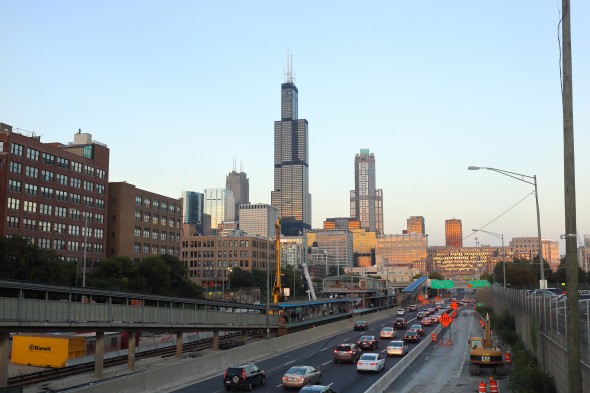Transportation access, air quality influence diabetes risk in urban areas
A new statistical study of U.S. cities and suburbs found associations between access to public transportation, air quality and risk for diabetes. The research, conducted by scientists at the University of Illinois Chicago, suggests that investment in transit and clean air could have unanticipated health benefits for residents in metropolitan areas.
The study analyzed environment, transportation and health data from nearly 1,500 U.S. counties. Across these areas, lower walkability, reduced use of public transportation and higher levels of air pollution were associated with higher prevalence of diabetes and reduced diabetes control.
Some of the effects were amplified in counties with racially diverse residents, suggesting these factors may contribute to health disparities in diabetes risk and control. The transportation and air quality effects were also found to be additive in how they influence diabetes prevalence.
“The findings suggest that policy promoting green space, better transportation and walkable communities could be a way to reduce overall diabetes prevalence within large populations,” said lead author Margaret Weiss, a sixth-year MSTP student at UIC. “By addressing multiple factors at once, you will have a larger reduction in risk compared to if you just stress one area.”
The study, published in Journal of the Endocrine Society, is the latest from the research group of Dr. Robert Sargis, associate professor of medicine at UIC. Sargis, an endocrinologist focused on the treatment of diabetes and lipid disorders, also studies how environmental pollutants such as endocrine-disrupting chemicals and air pollution contribute to metabolic diseases.
While the new paper analyzed population-level data, not individuals, Sargis suggested that it could drive clinical conversations around how transportation choices influence personal health.
“Taking people out of their cars and getting them to use active transportation is a form of physical activity that I don’t think we address clinically, because in part, that’s often not a choice. It’s dependent upon the ecosystem in which someone lives,” Sargis said. “But maybe this is further justification for talking to our patients about what opportunities their neighborhoods offer and how they might choose forms of transportation that promote health.”
In addition to Sargis and Weiss, co-authors include Sneha Adusumilli of the UIC College of Medicine and Jyotsna S. Jagai of the University of Chicago.

